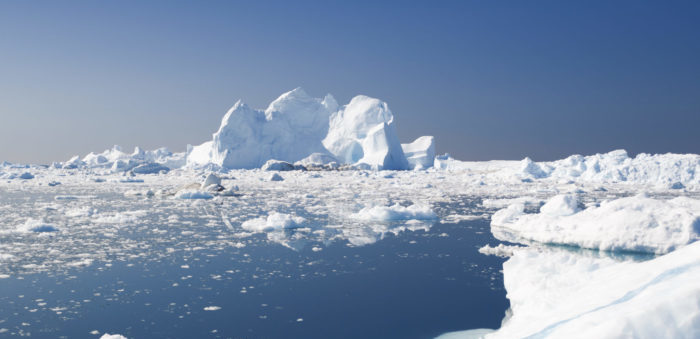A new Pan-Arctic Climate Outlook Forum met in May for the first time to provide predictions for the forthcoming summer season as part of an international drive to improve weather, climate and sea ice forecasts in Arctic, a region undergoing rapid environmental change. According to the outlook, surface temperatures are expected to continue to be above average for June, July and August 2018, whilst sea ice is forecast to be below normal for most of the Arctic.
The reality of climate change and its impacts prompted the decision to initiate pan-Arctic seasonal predictions, based on regional collaboration approaches that are already well established in most other parts of the world. It will provide up to date summer and winter seasonal predictions to support on-going climate change adaptation and decision-making in climate-sensitive sectors.
The World Meteorological Organization co-sponsored the 15-16 May meeting, which was hosted by Environment and Climate Change Canada in Ottawa and was attended by member countries of the Arctic Council.
Designed as a two-way dialogue, the session heard from representatives of Arctic indigenous organizations who have lived for generations in the Arctic who shared their knowledge about changing conditions, the challenges they face, and the type of forecasts and climate services they need.
The climate forum also invited commercial shipping stakeholders from the dry-bulk and tourism sectors. They need access to climate and weather information in the Arctic to better inform their activities and ensure not only their safety, but the protection of the environment.
World Meteorological Organization President David Grimes said:
Coordinated oversight is critical in these sparsely-populated, remote parts of the world. There is an urgent need to better understand if and how the loss of ice that is happening as a result of the changing climate will impact local, regional, and global climate dynamics…What happens in the Arctic does not stay in the Arctic.
The Pan-Arctic Regional Climate Outlook Forum (PARCOF) is the first step towards the establishment of an Arctic Regional Climate Centre Network, which is based on WMO’s Regional Climate Centre concept and will receive active contributions from all the Arctic Council member countries. Its structure will consist of three sub-regional geographical nodes:
(i) North America Node,
(ii) Northern Europe and Greenland Node and
(iii) Eurasia Node.
The Arctic experiences two main seasons: a long and icy winter of about 9 months and a short and cool summer of about 3 months. Therefore, PARCOF sessions will be held twice per year: a face-to-face meeting in April/May preceding the summer ice break-up, and a virtual meeting in October before the ice returns in the winter season.
Summary of the Pan-Arctic Climate Outlook for Summer 2018
Strong warm oceanic temperatures, predominant atmospheric circulation, and the distribution of sea ice are the main contributors of predictability over Arctic regions such as the Bering and Greenland seas and adjacent coastal areas.
- Temperature: The November 2017 to April 2018 average surface temperature in the Arctic domain north of 65°N was the third highest since 1949. Surface temperatures over the same region are expected to continue to be above average for June, July and August (summer) 2018, with probabilities ranging between 40 and 70%.
- Precipitation: Precipitation during the period October 2017 to March 2018 was slightly above average over the Arctic region. For the upcoming summer, Alaska, western Canada, the Canadian Arctic Archipelago, and the easternmost parts of Russia have a slight chance of above normal precipitation, while the Gulf of Bothnia has a slight chance of drier than normal conditions.
- Sea ice: The Northern Hemisphere March 2018 maximum sea ice extent was the second lowest on record, driven by record low sea ice extent in the Bering Sea. The previous winter’s record low sea ice extent, combined with observed and predicted above normal temperatures for the Arctic region, will contribute to below normal sea ice conditions for the majority of the Arctic.




























































